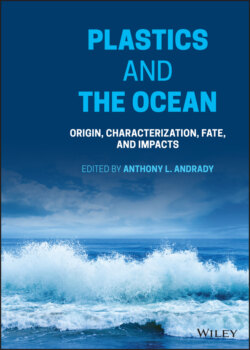Читать книгу Plastics and the Ocean - Группа авторов - Страница 42
2.2.3 Antioxidants
ОглавлениеPlastic materials are organic substances that are susceptible to oxidative degradation. For example, polyolefins (i.e. PE, polypropylene) degrade by autoxidation, a cycle that can be slowed by the action of antioxidants. Throughout a plastic’s life cycle (i.e. production, processing, use, and disposal), the polymer is subjected to a variety of damaging stresses. This includes high temperatures and shear rates from the multiple melt compounding steps as the product is transformed from reactor powder or pellets into a finished article and ultimately processed again through recycling. In addition to temperature and shear, catalyst residues, entrained oxygen, and other types of impurities might also play a role in promoting further degradation of the polymer (Zweifel et al. 2001).
During these repeated heat histories, polymers undergo a series of free‐radical‐mediated oxidation reactions. These result in the formation of polymer hydroperoxides that thermally dissociate into additional free radicals (see Chapter 8 for detailed reactions). In addition to introducing oxygen‐containing functionalities into the plastic, the oxidative reactions also facilitate chain scission altering its average molecular weight (MW), MW distribution, and structure of the polymer backbone. When not stabilized adequately, the plastic will ultimately begin to lose its mechanical integrity; this will also limit the recyclability of the polymer and can lead to the formation of microplastics (Zweifel et al. 2001).
Antioxidants are used to prevent the formation of free radicals. Phenolic antioxidants scavenge oxygen‐centered free radicals, such as alkoxy‐, hydroxy‐, and peroxy‐type species, and prevent reaction with the polymer backbone (see Chapter 8). These substances include hindered phenols their and APs. Phosphites and thioesters are used to decompose the hydroperoxides into relatively inert products. These additives are used to impart longevity and stability in the plastic article. Since they are designed to remain active in the matrix for a long time, they continue to protect the article after disposal, which leads to long life spans of polymers in the environment. The most common antioxidants are listed in Table 2.3 along with their corresponding class and structures.
